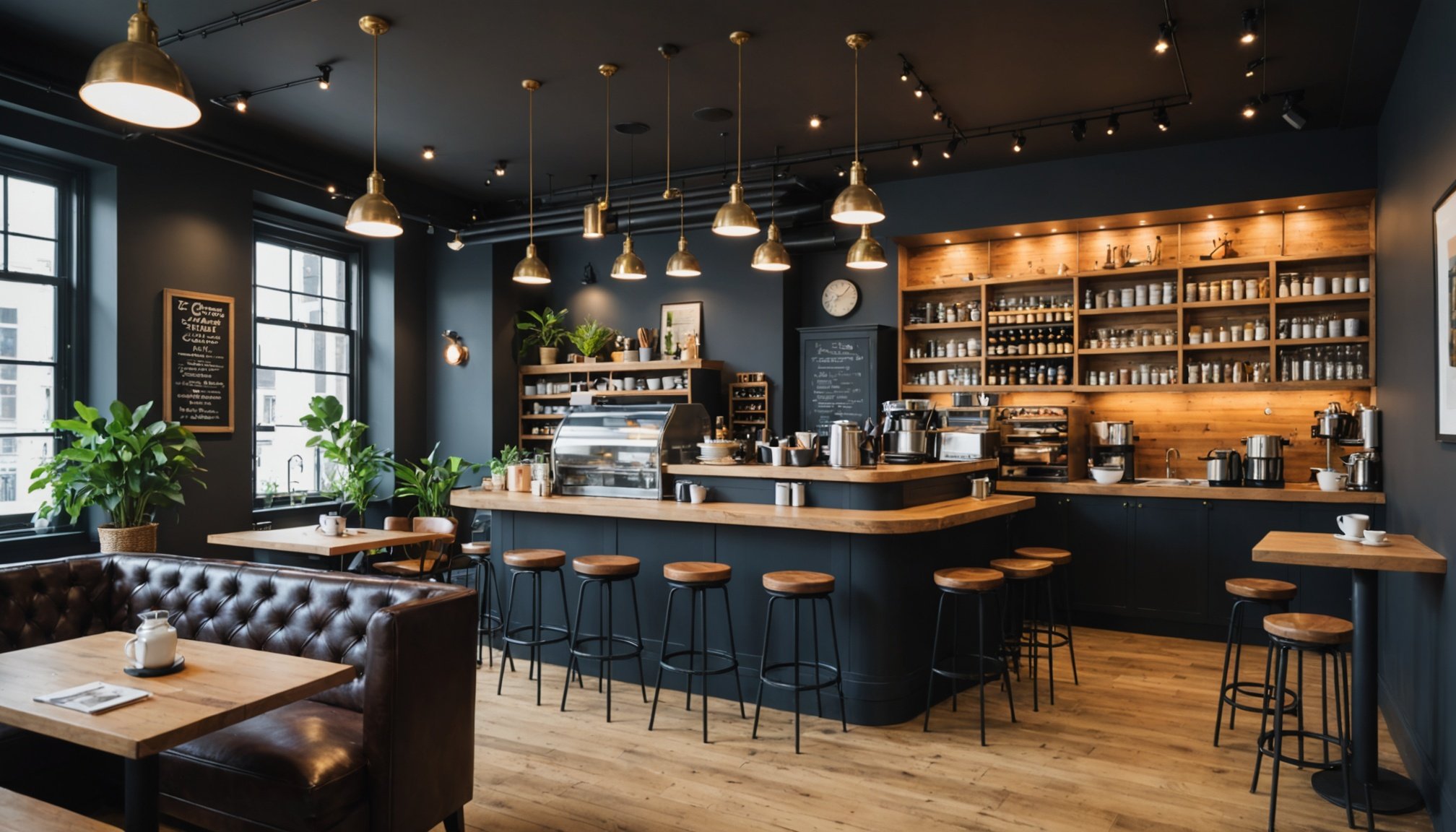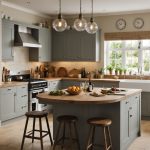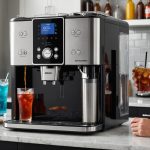Understanding Your Café’s Purpose
Creating a café requires a deep understanding of its purpose and conceptual framework. To begin, clearly identify your target audience. Are you catering to busy professionals, students in need of study spaces, or families seeking leisure time? Recognising your audience is fundamental. It guides every decision, from location to menu offerings, influencing the overall concept.
Next, define the intended atmosphere and experience. This includes the moods you wish to evoke when customers enter the café. Should it be a cozy sanctuary where guests can unwind, or an energetic social hub? The desired atmosphere will dictate décor choices, music selection, and even the level of service provided.
Also to see : Creating a Robust Health and Safety Blueprint for Your Commercial Kitchen: Essential Steps Unveiled
When exploring various café themes and styles, you might consider minimalist, rustic, vintage, or bohemian designs. Each style resonates with different lifestyles and preferences. It’s vital to integrate these themes seamlessly with your café’s purpose. For instance, a minimalist design with clean lines and open spaces might appeal to those who value simplicity and modernity.
By aligning the café’s design with its purpose, you ensure that all elements work towards a cohesive and engaging customer experience. This thoughtful approach lays a solid foundation, inviting patrons into a space they find both welcoming and memorable.
Additional reading : Family Feast for All Ages: Crafting a Kid-Friendly and Adult-Approved Menu!
Layout and Space Planning
Successful café layout design is crucial for an engaging customer experience and smooth operations. The key is to understand various layout types and their benefits. For instance, linear layouts typically maximise space by aligning furniture along walls, ideal for narrow properties. Circular layouts, meanwhile, facilitate easy movement, enhancing café flow and functionality, particularly in crowded areas.
Focus on space utilisation when designing. Efficient space optimisation involves welcoming plenty of patrons while ensuring comfort and accessibility. Maximise seating through creative solutions like multi-use furniture or creating intimate nooks in larger spaces.
Assessing the flow and functionality of your café is essential. Consider pathways for staff and customers to avoid congestion. Efficient design leads to enhanced customer satisfaction and streamlined service.
Remember these space planning tips:
- Use vertical space for storage or decor.
- Choose furniture with dual functionality (e.g., benches with storage).
- Keep pathways clear to ensure smooth movement.
Incorporating thoughtful space optimisation minimises potential pitfalls and results in a harmonious blend of practicality and aesthetics. Tailoring the layout to your unique space and audience needs builds a welcoming atmosphere. Thus, efficient space planning elevates both the customer experience and operational performance.
Furniture and Equipment Selection
Choosing the right café furniture not only augments the overall design theme but also enhances the customer experience. The selection should complement the existing aesthetic, whether minimalist or vintage. Ergonomics plays a critical role—furniture must provide comfort for patrons, encouraging them longer stays and repeat visits. Opt for seating options with adequate back support, as these contribute significantly to customer comfort. Additionally, the height of tables and chairs should be considered, especially for diverse clientele such as families with children or activity-focused students.
When it comes to practical equipment choices, efficiency and reliability are paramount. Essential kitchen appliances such as espresso machines, blenders, and commercial ovens must align with the café’s menu offerings, supporting seamless service. Equipment durability is equally crucial, as high-quality appliances reduce downtime and maintenance costs. Incorporating multi-functional devices, such as combination ovens or sous-vide gear, can further optimise the kitchen’s functionality and cater to varied preparation techniques.
For café owners, understanding the balance between aesthetic furniture appeal and essential operational equipment is vital. This ensures a cohesive space that supports both practical service demands and a pleasant patron experience, ultimately fostering a successful business environment.
Color Schemes and Aesthetic Appeal
The significance of color schemes in a café extends beyond visual attraction; it is crucial in setting the mood and enhancing customer experience. By understanding color psychology, café owners can strategically influence patrons’ emotions and behaviour. For instance, warm tones like yellows and oranges are often used to create an inviting and energetic atmosphere, encouraging social interaction. Conversely, cool tones such as blues and greens can promote relaxation, making them suitable for quiet, contemplative spaces.
Incorporating brand colors into the café design ensures consistency and strengthens brand identity. This approach not only personalises the space but also enhances brand recognition—vital for loyalty and marketing purposes.
Finding a harmonious balance between bold colors and neutral tones is essential for achieving aesthetic equilibrium. While vivid hues can add vitality and focus attention, they should be paired with neutral shades to prevent sensory overwhelm. This balance facilitates a pleasing and coherent visual experience.
Thoughtful color application in café design is paramount. It impacts the overall ambiance, helping to create a space that resonates emotionally with its target audience while supporting the café’s unique concept and brand identity.
Lighting Design Essentials
Lighting is a crucial component in creating the desired ambience within a café. Understanding the roles of different lighting types—ambient, task, and accent lighting—is essential for enhancing the atmosphere and facilitating activities. Ambient lighting serves as the primary light source, ensuring general visibility and comfort. It can include overhead fixtures or natural light and sets the general mood of the space.
Task lighting is more focused and functional, designed to illuminate specific areas such as counters or reading zones. This type of lighting supports activities such as order-taking and reading, where clarity and focus are necessary. In contrast, accent lighting adds drama and interest, highlighting specific features like artwork or architectural elements.
Achieving the correct balance between natural and artificial lighting is pivotal. While natural lighting can create warmth and a connection to the outside world, artificial options provide consistency and control. The key is to layer these lighting types, creating a dynamic and versatile environment.
Ultimately, lighting should harmonise with the café’s layout and aesthetic to enhance the customer experience. A thoughtfully lit space can transform the café into a welcoming and memorable place, encouraging patrons to linger and enjoy their time.
Customer Experience and Workflow Considerations
A well-planned workflow design directly influences customer experience optimisation in a café. Efficient service begins with a layout that facilitates smooth operations. An often overlooked yet crucial aspect is the positioning of key elements like the cash register, beverage stations, and seating areas. Placing these strategically minimises congestion and ensures that staff can move swiftly.
To enhance customer comfort and satisfaction, consider elements like seating arrangement and noise levels. For instance, incorporating booth seating can provide both privacy and comfort, appealing to groups seeking a cosier experience. Moreover, acoustics play a vital role; sound-absorbing materials can help reduce noise, creating a more pleasant environment conducive to conversation and relaxation.
Integrating technology is essential for a streamlined experience. Implementing digital order systems and payment solutions speeds up transactions and reduces wait times. For example, mobile apps allowing advance orders cater to tech-savvy customers who value time efficiency.
In summary, a thoughtfully designed workflow coupled with technology integration not only bolsters service speed but also enriches the overall customer experience, ensuring patrons leave satisfied and eager to return. Such considerations make significant contributions to a successful café operation.
Visual Aids and Expert Insights
Utilising visual elements such as photos and sketches can greatly enhance the inspiration and planning process for your café. Engaging with case studies of successful café designs can showcase unique elements that stand out, offering valuable insights into what works well in practice. Key takeaways from these case studies often include the clever use of space and light, innovative theme integration, and adaptive customer-centric solutions.
To delve deeper into emerging trends, expert opinions can provide nuanced perspectives on café design trends. Industry experts suggest focusing on customer interaction points, like self-service stations or interactive menu boards, which can modernise the café experience. Another trend is the integration of sustainable materials, reflecting growing consumer demand for eco-friendly practices.
It’s advisable to maintain a balance between innovative ideas and practical applications. Keeping designs aligned with the café’s overarching conceptual framework ensures all elements work cohesively. Additionally, involving experienced designers can provide new perspectives and improve quality. Some prefer inviting design experts to review proposed plans, offering suggestions that align with current market preferences. Ultimately, these practices foster an aesthetically pleasing and highly functional café environment, which draws in and retains a diverse customer base.
Step-by-Step Implementation Guide
Successfully executing a café design demands a structured Café Design Process and mindful resource management. First, segment the process into clearly defined phases, such as concept development, budgeting, space planning, and construction. This breakdown facilitates tackling tasks systematically while maintaining an overarching vision.
Budgeting and resource allocation are pivotal. Begin by evaluating your total budget, then distribute funds wisely across categories like construction, furniture, and decorative elements. Ensure to leave a buffer for unexpected expenses. Deciding on priorities early aids in maintaining financial discipline.
Feedback and iteration are integral in refining your design. Engage potential customers and staff in reviews of the evolving space. Their insights can reveal overlooked aspects, enhancing both functionality and aesthetic appeal. In this iterative phase, adaptability is crucial—a willingness to re-evaluate decisions can lead to improved outcomes.
Practical actionable steps strengthen the design endeavour. For instance, creating a detailed checklist ensures consistency and saves time. From prototype designs to final adjustments, employing such methods fosters a smoother execution. Ultimately, using a step-by-step methodology not only makes the process more manageable but also solidifies the foundation for a successful café that resonates with its audience and operational goals.






